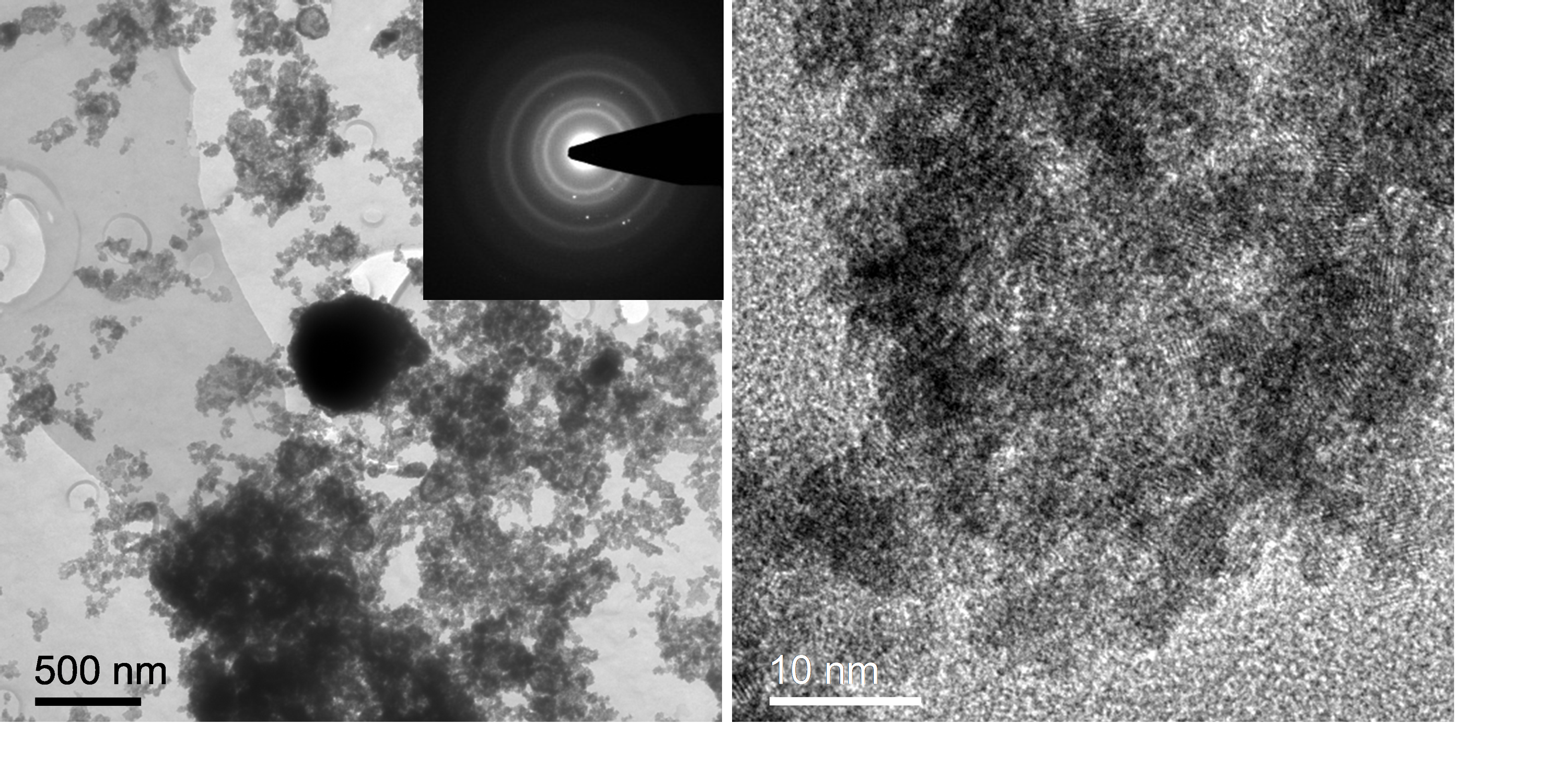E.M.H. White, L.M. Rueschhoff, T. Kobayashi, J.Z. Bloh, S.W. Martin, I.E. Anderson
Surfaces 7 (2024;),:725-738, DOI: 10.3390/surfaces7030047

High density portable energy storage is desirable owing to the energy requirements of portable electronics and electric vehicles. The Li-ion battery’s high energy density could be even further improved through the utilization of alternative materials (instead of carbon) for the anode, such as Sn or Si. Nonetheless, the large volume expansion upon lithiation, up to ~300% for Li22Si5, causes pulverization and rapid capacity degradation during cycling. Sn also forms a Li22Sn5 compound with the equivalent stoichiometric Li capacity but with enhanced ductility. Nano-sized Si and Sn have demonstrated distinctive nanoscale properties, facilitating the retention of higher capacities, particularly when coated with carbon, which improves mechanical stability. To date, the methods of synthesizing coated Si, Sn, or Si-Sn alloyed nanoparticles are complicated, costly, and not readily scalable to meet the demands of cost-effective manufacturing. Spark plasma erosion in a hydrocarbon dielectric has been explored as a one-step process to produce Sn-Si alloy nanoparticles coated with a thin carbon film, offering a scalable and cost-effective processing route. The resulting Sn-Si particles exhibited a bi-modal size distribution at ~5 nm and ~500 nm and were carbon-coated, as intended, from the hydrocarbon dielectric breakdown. The spark-eroded nanoparticles were thoroughly characterized using TEM/EDS, XPS, AES, SSNMR, and TGA, and their improved electrochemical performance was assessed through half-cell experiments.